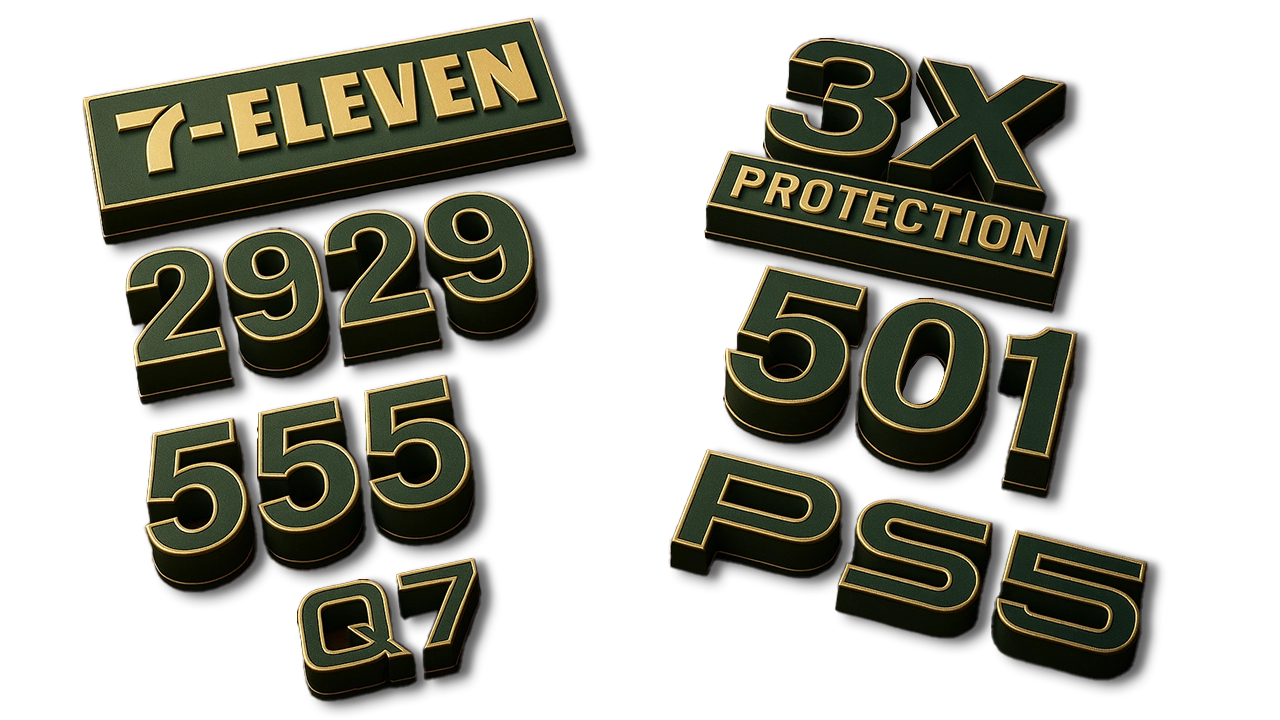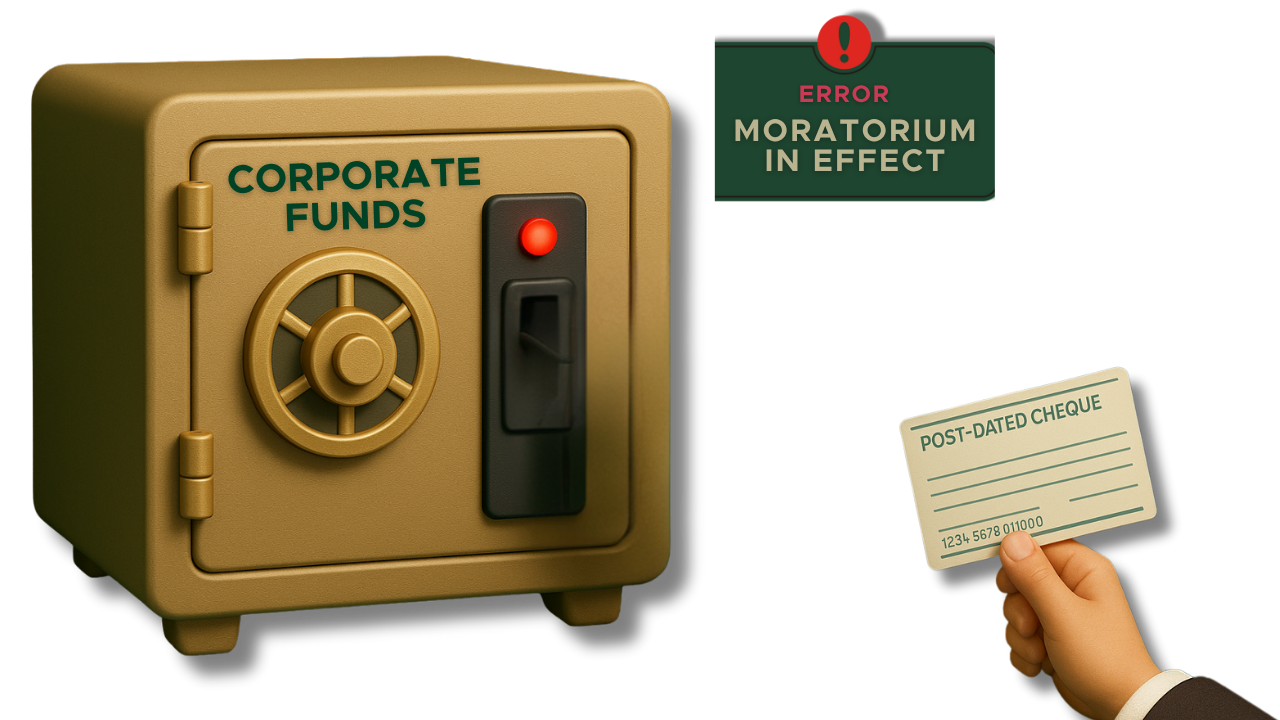In the evolving landscape of branding and intellectual property, the most powerful identifiers are often the most unexpected. While a trademark is traditionally conceived as a word, a logo, or a symbol, a new paradigm is emerging where numbers, once considered abstract and devoid of meaning, are transcending their conventional role. In their purest form, numbers are mere tools for measurement and calculation, but through human association, they can acquire a profound commercial significance. While a numerical sequence may, in some industries, serve a purely descriptive function denoting a product’s size, model, or version—it can, and increasingly does, transcend this limitation to become a genuine and potent brand identifier.
The successful trademark registration of brands such as “7-Eleven” demonstrates that numbers possess the inherent capacity to function as a distinctive brand identifier. This burgeoning trend of leveraging numerical sequences for brand identity has prompted significant legal inquiry into whether a string of numbers, devoid of any accompanying alphabetical letters or graphical elements, can be registered as a trademark. This question lies at the heart of current debates in trademark law, and the recent Delhi High Court judgment in Vineet Kapur v. Registrar of Trade Marks1 offers significant clarity on the concept. The topic has been further underscored by the ongoing case of Castrol Limited v. Sanjay Sonavane2, where the court, headed by Justice Tejas Karia, passed interim orders safeguarding Castrol India’s right to use its “3X Protection” mark on engine oil, deeming the threats from the opposing party unjustifiable. The salience of this topic warrants a deeper dive into the contours of this evolving area of law.
Trademarks are the bedrock of brand identity, distinguishing goods and services in a crowded marketplace. For a long time, the Indian legal system held a conservative view on the registrability of purely numerical marks, treating them with a degree of skepticism. This was rooted in the notion that numbers are part of the public domain, and granting exclusive rights to them would create an undesirable monopoly. However, the rapidly evolving commercial landscape, where simplicity and memorability are paramount, has given numbers a growing salience as powerful brand identifiers. The judgment of Vineet Kapur (supra) marks a pivotal shift, moving beyond a formalistic approach to a more substantive and contextual understanding of distinctiveness.
This notable ruling is a culmination of a gradual, but definitive, evolution in judicial thinking. The core principle established in the case is that numbers, and their combinations, are inherently capable of functioning as trademarks. The Court emphatically stated that the mere fact that a mark consists of numerals is not a sufficient ground for refusal. This is firmly grounded in Section 2(1)(m) of the Trade Marks Act, 1999, which explicitly includes “numerals” in the definition of a mark. The judgment clarifies that the true test lies not in the mark’s composition, but in its ability to fulfill the essential function of a trademark, that is, to serve as a source identifier and distinguish goods from those of competitors.
Thus what the court prioritizes is the principle of inherent distinctiveness, that is, a numerical mark can be inherently distinctive if it is arbitrary in relation to the goods or services it represents. For instance, in the case of the number “2929” for cosmetic products, the Court found no logical or descriptive connection between the mark and the nature, quality, or characteristics of the goods. This arbitrariness elevates the mark beyond a mere sequence of digits, transforming it into a unique, coined symbol of commercial origin. This approach liberates brand owners from the onerous burden of proving acquired distinctiveness through years of market use, allowing for the registration of such marks on a “proposed to be used” basis.
This progressive stance is not an isolated incident but is supported by a series of judicial precedents that have incrementally paved the way for numerical marks. For instance, the protection afforded to the mark “501” for soap in Tata Oil Mills Co. Ltd. v. Reward Soap Works3 and “555” for incense sticks in Jagan Nath Prem Nath v. Bharttya Dhoop Karyalaya4 demonstrates a long-standing judicial willingness to recognize the trademark value of numbers. Similarly, the Delhi High Court’s ruling on the mark “91” for bicycles in Alphavector India Pvt. Ltd. v. Sach Industries5 further solidified this trend. These judgments collectively establish that when a numerical combination is used consistently to identify a particular brand, it can acquire distinctiveness and deserves legal protection.
The stance of Indian Trademark Registry should be glanced at rather than applying a rigid prohibition against numeric or alphanumeric marks, the Indian Registry adopts a nuanced, fact‑driven stance, flagging them only if they seem descriptive or industry-standard. Marks like Chanel’s “Q7” for cosmetics, Audi’s “Q7” for vehicles, and Sony’s “PS5” succeed because they’re arbitrary and function as brand identifiers, not product specifications. Applicants must show that such combinations are unique to their brand and unconnected to trade usage, ensuring distinctiveness from the outset.
Word Mark Vs. Device Mark
This very consideration—the distinctiveness of the mark’s format leads us to a crucial distinction in trademark law: the difference between a word mark and a device mark. While numerical marks such as “501,” “555,” and “91” have been successfully registered, these registrations are typically granted for the specific visual representation of the mark—that is, the device mark. This is a critical point, as the registration of a device mark does not automatically confer protection on its individual textual or numerical components outside of the exact registered format.
Legal precedent holds that broader protection necessitates a separate registration and examination of the word mark, particularly for enforcement against uses that do not replicate the registered visual presentation. For example, in the Vineet Kapur ( supra) case courts clarified that the registration of a device mark for “2929” does not imply automatic protection for the word mark “2929” itself. A distinct application and independent scrutiny are required for the word mark, and objections to it can be maintained even if a related device mark has been granted registration. This dual-track approach ensures that the scope of protection is clearly defined and consistent with trademark law principles.
Conclusion
The cumulative effect of judicial precedents on the registration of numerical marks holds profound implications for the future of branding and trademark law. Indian courts have consistently balanced proprietary rights with the public interest, as evidenced by their approach to non-traditional marks. By granting protection to specific numerical combinations while expressly prohibiting the monopolization of individual digits, the judiciary ensures that fundamental elements remain in the public domain for all to use. This principle is vital for fostering creativity and preventing the exhaustion of basic marks.
This line of reasoning offers a clear blueprint for the future of non-traditional marks, including those generated by algorithms or artificial intelligence. As brand identifiers become shorter and more abstract, the principles of arbitrariness and source identification will serve as the guiding light for the Indian Trademark Registry and the judiciary. This progressive stance signals that the legal system is not only adapting to but actively embracing the digital and numerical future of commerce.
Citations
- Vineet Kapur v. Registrar of Trade Marks [C.A. (COMM.IPD-TM) 22/2024)].
- Castrol Limited v. Sanjay Sonavane, CS(COMM) 855/2025.
- Tata Oil Mills Co. Ltd. v. Reward Soap Works, AIR 1983 Del 286.
- Jagan Nath Prem Nath v. Bharttya Dhoop Karyalaya, AIR 1975 Delhi 149
- Alphavector India Pvt. Ltd. v. Sach Industries [CS (COMM) 691/2022]).
Expositor(s): Adv. Mahelaka Abrar






